Table of Contents
HIGHLIGHTS OF NAPLES FROM THE CRUISE TERMINAL – Part I
Discover the secrets of Naples with its World-class monuments, some of the best food in Italy, a vibrant street life and a thriving contemporary art scene. Start your exploration of this amazing city from the Cruise Terminal as soon as you get off your ship and begin your journey to enjoy as much as possible of what the area has to offer in the time span you have available!
New Castle
Your exploration of some of the highlights of Naples starts the minute you walk off your ship, with the 13th-century Castel Nuovo right in front of the Cruise Terminal. Built between 1279 and 1284 the New Castle stretches back to Charles I of Anjou who upon taking over Naples, launched a great construction plan to expand the city walls and port area. Its strategic position gave it the characteristics not only of a royal residence, but also those of a fortress. Named New Castle to distinguish it from the other two royal residences of Naples (Castel dell’Ovo and Castel Capuano), it soon became a popular landmark for the intellectuals and artists of that historical period. Of the original French structure, however, few parts remains; the rest of the Castle is the result of the Aragonese restoration that took place two centuries later when Alfonso the Magnanimous conquered the city in 1443. The castle is nowadays the venue of cultural events and it houses the Municipal Museum of Naples arranged on several floors that includes sculptures, paintings and objects ranging from the medieval period to the late 19th century and the Palatine Chapel.
Tickets: € 6 – Free entry under 18.
Opening hours: Mon – Sat 09.00 – 19.00.
Piazza Municipio
The importance of Piazza Municipio (City Hall Square) dates back to the Angevins, when the Maschio Angioino, the New Castle, was built and surrounding area thus became the symbol of authority. Later, the Aragonese expanded the fortifications and took up most of the present-day square. In the late 1800s, the urban renewal of Naples started and the area outside the castle was transformed into the Piazza Municipio we see nowadays. The present day Municipio (City Hall) on the north edge of the square dates back to the early 20th century and is called Palazzo San Giacomo. It houses the mayor and the offices of the municipality of Naples. The square has been enriched during the restoration works for the construction of the new tube station with the monumental Fountain of Neptune (just in the middle of the square) built in the XVII century.
San Carlo Theatre
Within walking distance fr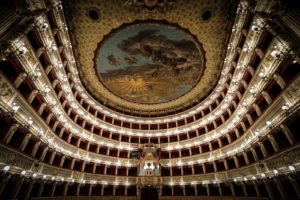 om the New Castle another highlights of the city: the San Carlo Opera House which is the most ancient theatre in Europe. Inaugurated in 1737, it was commissioned by the Bourbon King Charles III who aspired to endow the city with a magnificent theatre that would prove not only his power but also assure his artistic legacy. The Opera House was completed in only 8 months and was opened on November, 4th, for the king’s name day. The theatre is well known for its perfect acoustics and it counts 184 boxes on 6 orders and has a capacity of 1380 spectators. It was partially destroyed in 1816 by a fire in less than an hour, the only parts of the building to survive were the surrounding walls. All the greatest artists have performed, at least once in their lifetime, on the San Carlo stage, such as Niccolò Paganini, Gioachino Rossini, Gaetano Donizetti, Vincenzo Bellini, Verdi, Strauss, Debussy, Stravinskij and many more. Teatro San Carlo was damaged by bombs during World War II and underwent a significant restoration works between 2008-2009. From Monday to Saturday (except for holidays) visitors can have a guided tour to the theatre main hall, the boxes, the Royal box and the two Foyers.
om the New Castle another highlights of the city: the San Carlo Opera House which is the most ancient theatre in Europe. Inaugurated in 1737, it was commissioned by the Bourbon King Charles III who aspired to endow the city with a magnificent theatre that would prove not only his power but also assure his artistic legacy. The Opera House was completed in only 8 months and was opened on November, 4th, for the king’s name day. The theatre is well known for its perfect acoustics and it counts 184 boxes on 6 orders and has a capacity of 1380 spectators. It was partially destroyed in 1816 by a fire in less than an hour, the only parts of the building to survive were the surrounding walls. All the greatest artists have performed, at least once in their lifetime, on the San Carlo stage, such as Niccolò Paganini, Gioachino Rossini, Gaetano Donizetti, Vincenzo Bellini, Verdi, Strauss, Debussy, Stravinskij and many more. Teatro San Carlo was damaged by bombs during World War II and underwent a significant restoration works between 2008-2009. From Monday to Saturday (except for holidays) visitors can have a guided tour to the theatre main hall, the boxes, the Royal box and the two Foyers.
From Monday to Sunday
Morning: 10:30; 11.30; 12:30
Afternoon: 14,30; 15:30; 16:30
Galleria Umberto I
Just in front of the San Carlo Opera House, you could visit the Galleria Umberto I, one of the most majestic highlights of Naples, built between 1887 and 1890 to restore this area of the city. The architect, Emanuele Rocco, almost replicate the architecture of the Galleria Vittorio Emanuele I in Milan. Both galleries have indeed royal names; Vittorio Emanuele was the first king of united Italy, and Umberto had succeeded him by the time the gallery was opened in 1891. Built with a social and a commercial purpose, the Gallery aimed to combine shops with open spaces, like an indoor square with private spaces that support the iron and glass galleries roofs and huge dome. Richly decorated, it house an amazing floor mosaics that represent a variety of legendary and historic figures. Nowadays it offers tips for leisure, shopping, free time and sightseeing.
Piazza Trieste e Trento
Located next to the roundaboutlinking the San Carlo Theatre with Plebiscito Square and Toledo Street, Piazza Trieste and Trento took its current name in 1919 in honour of the Italian victory in World War I. Right in the middle of the square stands the monumental Fontana del Carciofo (Artichoke Fountain), while the current layout of the area was the result of the urban transformations of the nineteenth century. It is surrounded by some of Naples’s most beautiful buildings such as the San Carlo Theatre, the Royal Palace, the Palace of Cardinal Zapata, the Church of San Ferdinando, and the Galleria Umberto I.
Caffè Gambrinus
Overlooking Trieste and Trento Square, Piazza Plebiscito and the Royal Palace, the Gambrinus is the most popular Cafè in Naples. The history of the Gambrinus began with the Unification of Italy when, in 1860, on the ground floor of an elegant building it was opened the ‘Gran Café’. It soon became the centre of social, cultural and literary life of the city: kings, queens, politicians, journalists, writers and international artists came here to meet, discuss and write verses following the best European tradition of literary cafes. The Gran Caffé Gambrinus prospered until 1938 when the martial prefect ordered its closure for being considered an anti-fascist environment and some of its rooms were transferred to the Banco di Napoli. Luckily in the early seventies the Gambrinus was restored to its former glory and nowadays is a must for any tourist visiting the city: there is not a traveller who, arrived in Naples, decides not to make a stop at the Gran Café Gambrinus to get a real Neapolitan espresso or a sfogliatella!
Toledo Street
From Trieste and Trento Square the bustling Toledo Street—named after the Spanish viceroy Don Pedro di Toledo, who laid it out in 1536—passes north towards the historical centre of Naples. Surrounded by 17th- and 18th-century buildings whose former magnificence has been turned to commercial or municipal use, Toledo Street’s name was changed as a political gesture in 1870. It was then renamed Rome Street in celebration of a Unified Italy and as a symbolic way of washing off centuries of foreign domination of Naples. In the 1980s it reclaimed its former name –Toledo Street. Nowadays is the main shopping street in Naples where you will find a large range of small local shops as well as few larger department stores of the city.
These highlights of Naples are part of our guided tours Tasting Naples, Discover Naples on foot and Naples Explorer
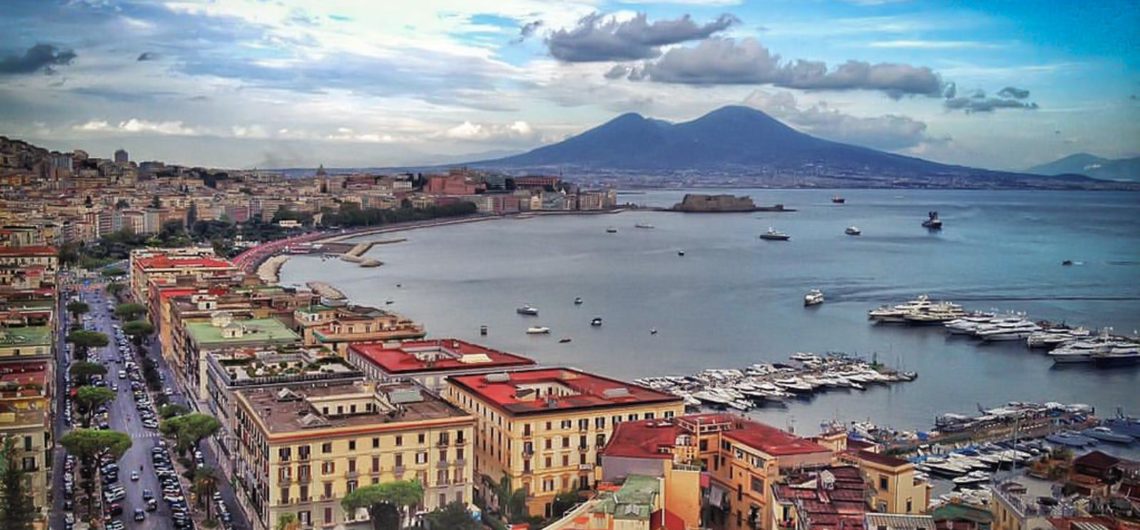
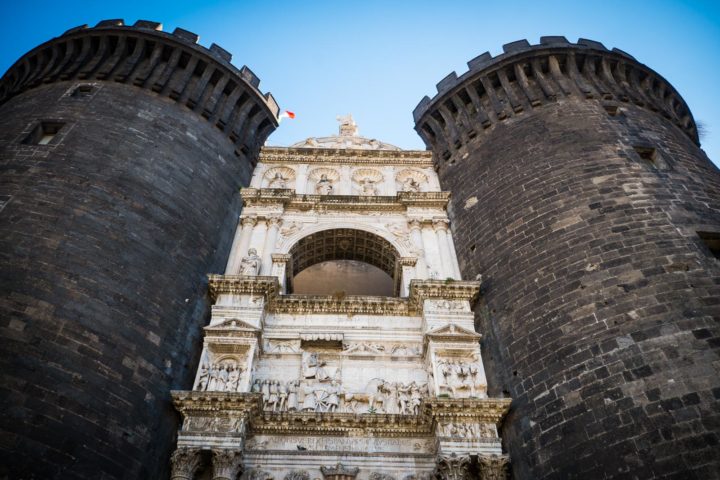
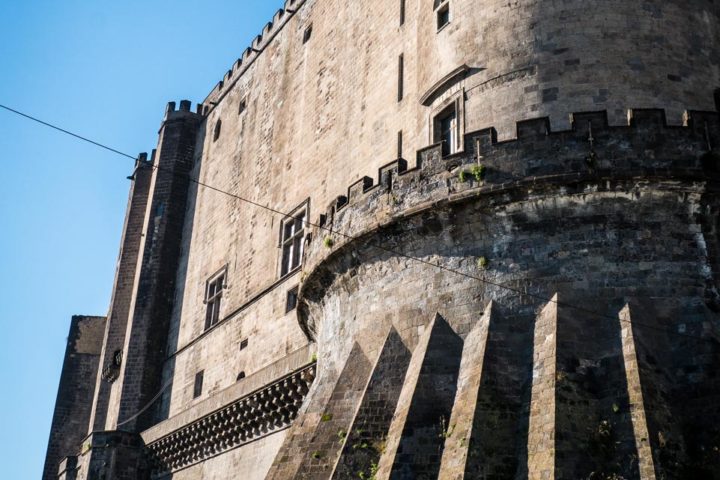
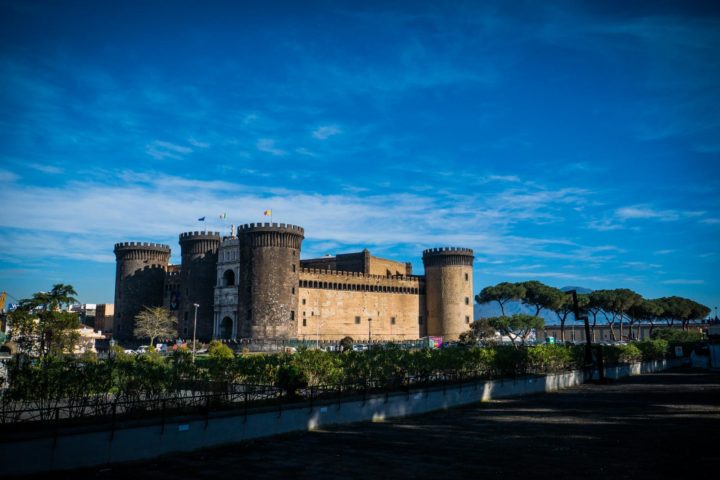
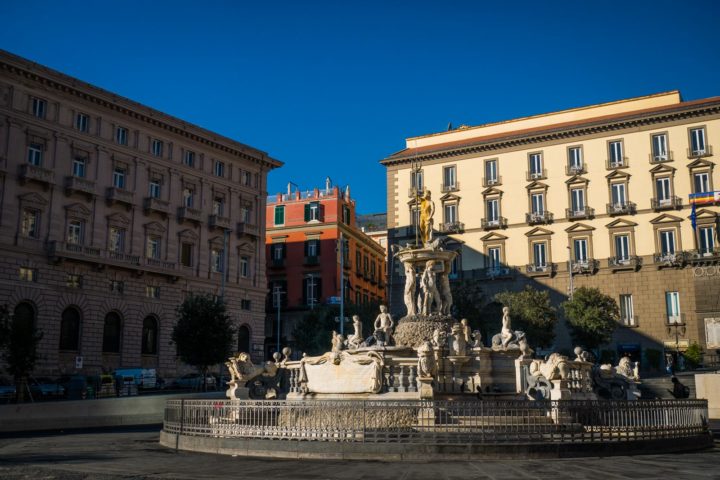
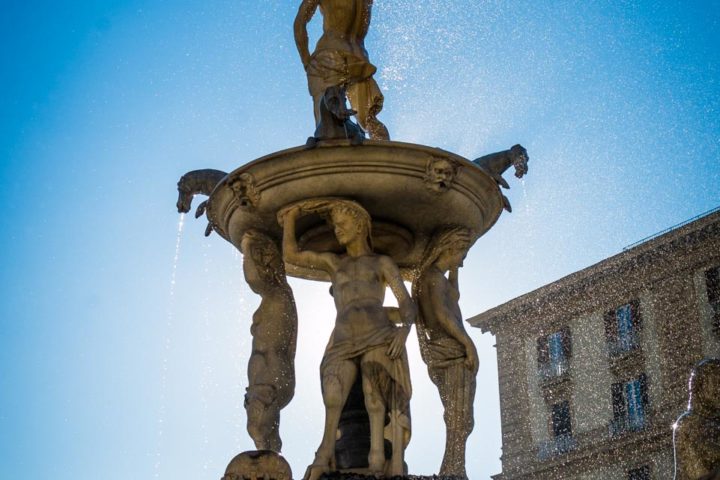
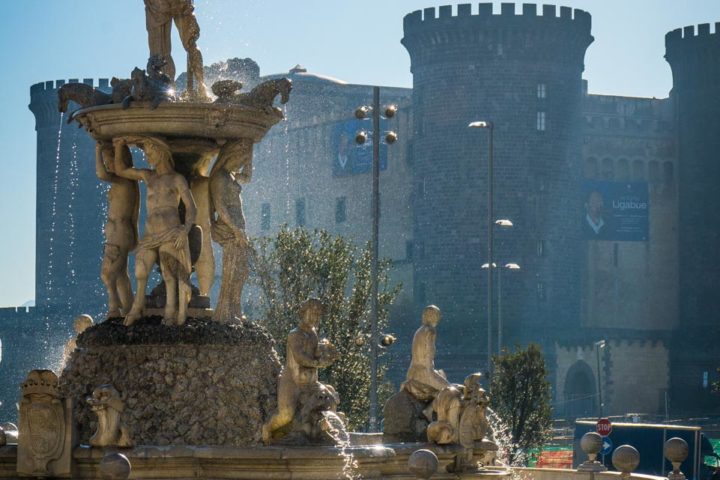
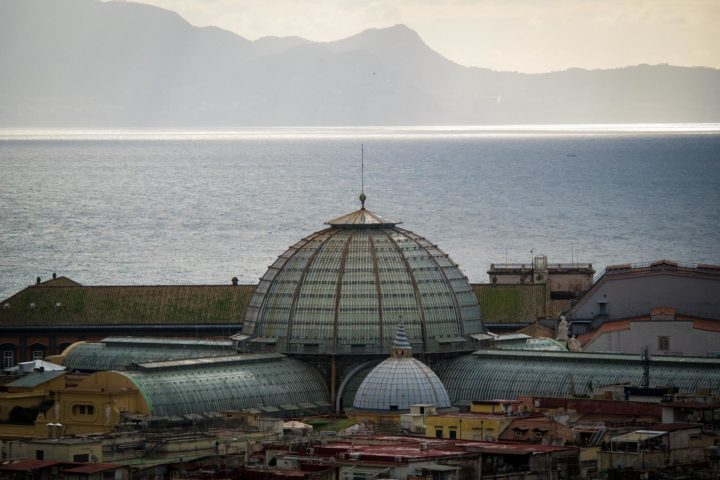
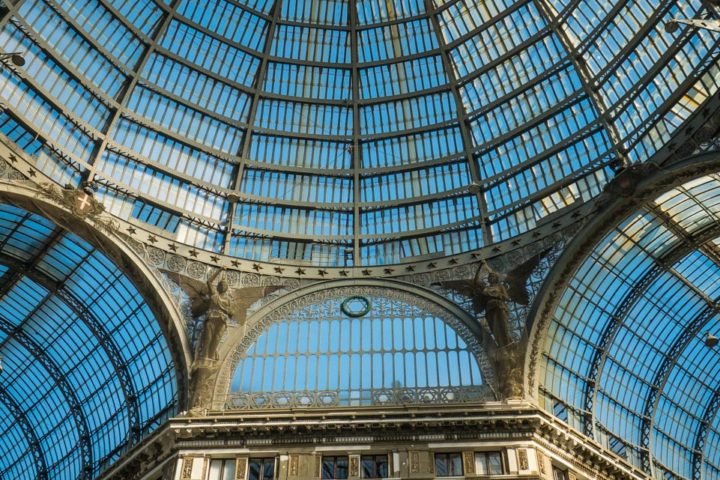
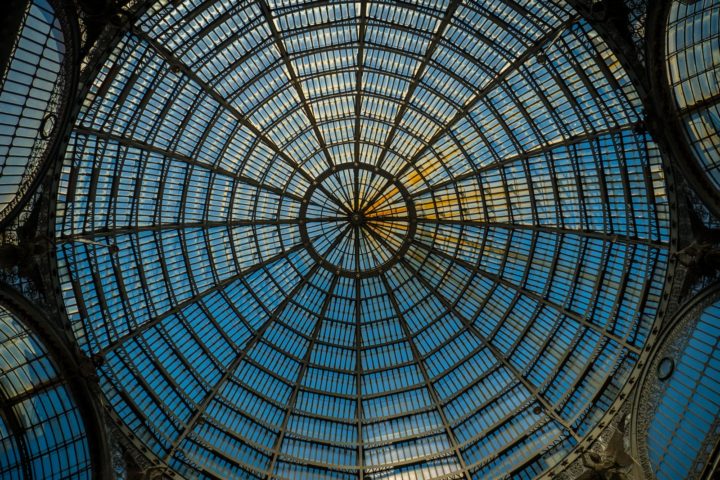
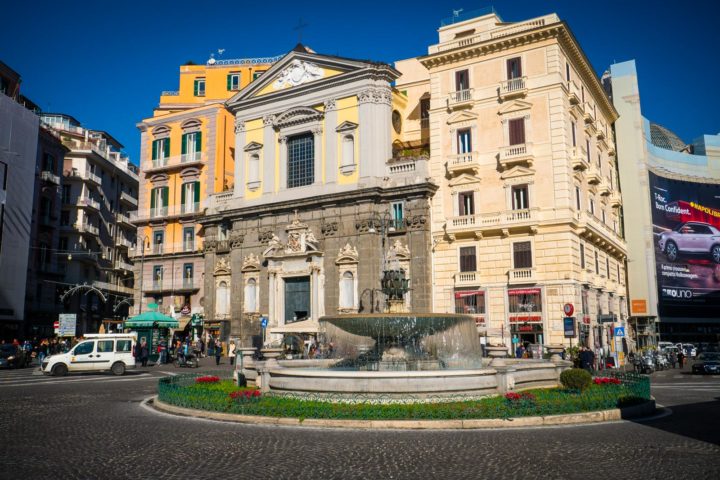
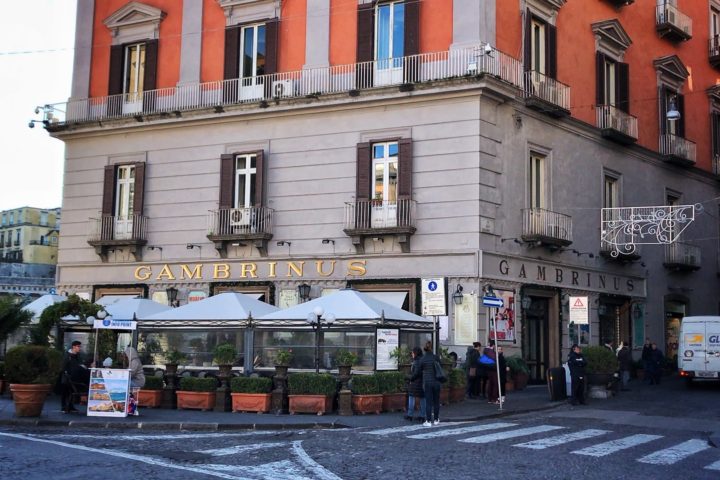
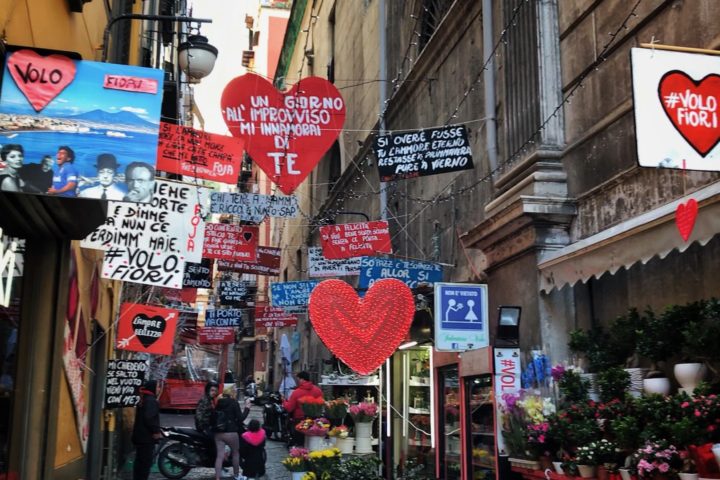
Comments